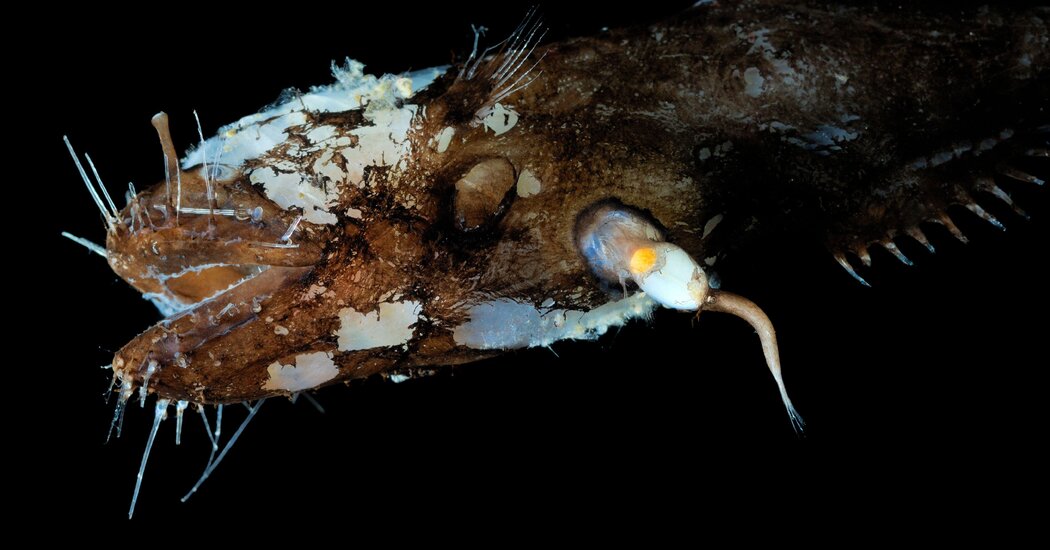How did the ghoulish creatures known as anglerfish pull off the evolutionary feat that let them essentially take over the ocean’s sunless depths?
It took peculiar sex — extremely peculiar sex.
Scientists at Yale University have discovered that a burst of anglerfish diversification began some 50 million years ago as the ancestral line developed a bizarre strategy to ensure successful reproduction in the dark wilderness.
To mate, tiny males would clamp with sharp teeth onto the bellies of much larger females. Some males would let go after mating while others would permanently fuse into the females. The males that stayed attached became permanent organs for sperm production.
“We found that a cascade of traits, including those required for sexual parasitism, allowed anglerfishes to invade the deep sea,” Chase D. Brownstein, a graduate student in the ecology and evolutionary biology department at Yale who was the study’s lead author, said in a news release.
Today, there are more than 300 species of anglerfish, which makes them the most varied family of vertebrates in the ocean’s lightless zone. The region starts about 1,000 feet down — just beneath the photic zone, which gets enough sunlight to support photosynthesis and most of the sea’s plants — and descends for miles. The team’s study was published last week in the journal Current Biology.
Finding a mate in the deep sea can be extremely difficult because of the environment’s incomprehensibly vast size. By some estimates, the dark zone amounts to more than 97 percent of the planetary space inhabited by living things, mainly because the ocean plunges to a maximum depth of nearly seven miles. In contrast, land habitats make up less than 1 percent of the planet’s biosphere because the band of life is so narrow, making its volume quite small.
The anglerfish’s bizarre mating routine is seen as counteracting the otherwise slim chances of finding a mate in the world’s largest ecosystem. It is the only known vertebrate that employs sexual parasitism, and that gave it an evolutionary edge.
Over time, the male can physically fuse with the female, connecting to her skin and bloodstream. Eventually, he loses his eyes and all internal organs except for his testes. A female can carry several males on her body.
The Yale team documented how immune systems that attack foreign threats changed over time so the female hosts would not reject the parasitic males.
Anglerfish get their name from how females use rodlike appendages with glowing tips to lure prey into their needlelike teeth. They’re fish that fish. Their mouths are so large and their bodies so flexible that they can swallow prey up to twice their size.
The Yale team used fossils and genetic data from more than 100 living anglerfish species to determine that the burst of diversification came during a major global heat spike between 50 million and 35 million years ago. The world’s oceans were thrown into turmoil, and the bottom-walking ancestors of the anglerfish began to explore the wider oceanic world.
“It happened in the blink of an evolutionary eye about 50 million years ago,” Mr. Brownstein said in an interview. “It was like whales going back into the ocean. It was amazing.”
The team found that, simultaneously, the fish developed their unusual reproductive skills. It was unable to determine which came first — temporary or permanent attachment.
Some female anglerfish can grow quite large, reaching more than three feet in length, but most are smaller. The free-swimming males typically are a few inches long.
How do they find the females in the perpetual darkness of the deep sea?
Mr. Brownstein said the males have enlarged nasal organs that are thought to let them follow faint trails of female pheromones through the darkness in order to find their partner.
“You sniff out your mate, literally,” he said.
